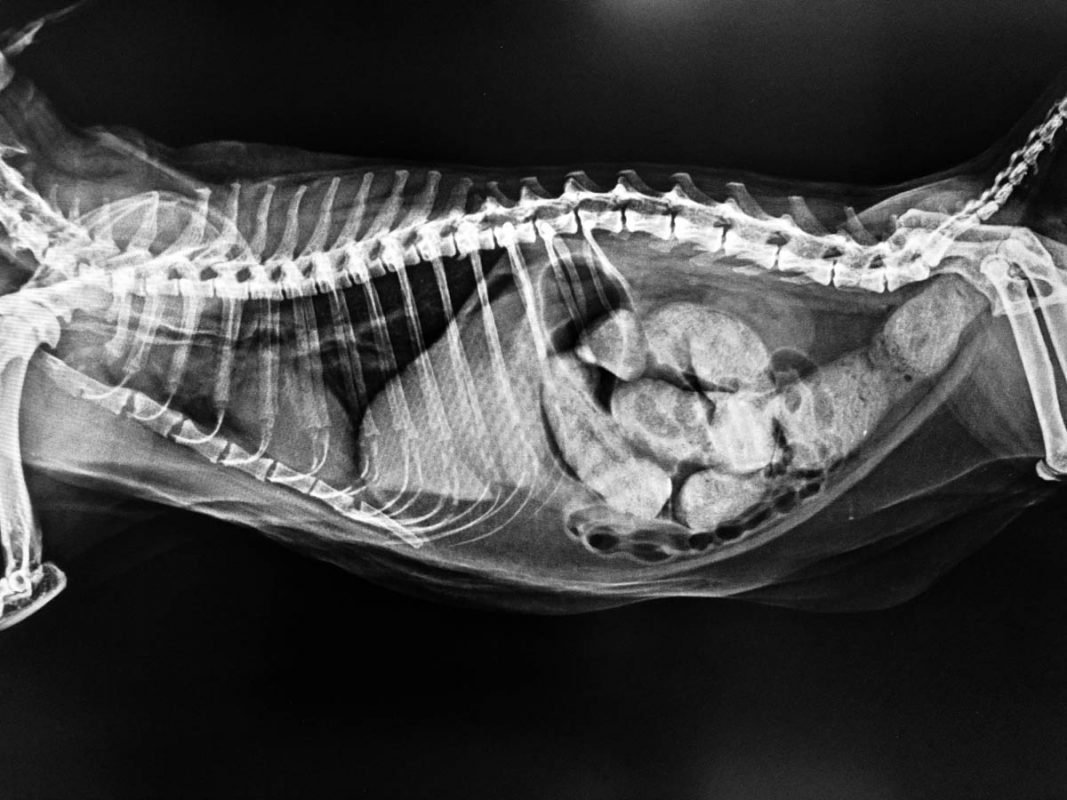What is megacolon?
Megacolon is a progressive disease in which the colon becomes abnormally dilated and enlarged and loses its ability to contract and function properly most often due to chronic constipation.
Causes
Colonic inertia causes the colon to lose its normal motility and leads to chronic constipation which distends the colon. The most common cause of colonic inertia is idiopathic (no known cause) however, improper activation of smooth muscle within the colon and rectum has been suggested as a possible cause. [1]
Additional causes:
- Dietary, such as ingesting nondigestible objects which become impacted
- Injury, from a pelvic fracture which causes a narrowing of the pelvis
- Refusal to defecate because of a dirty litter tray resulting in fecal matter building up and distending the colon
- Anal sac impaction which causes painful defecation
- Tumours of the colon or anus can lead to a blockage or painful defecation
- Neurological disorders such as Manx syndrome
Megacolon can occur in cats of any age or breed but is most commonly observed in middle-aged cats with a mean age of 5.8 years.
Clinical signs
- Straining in the litter tray, the cat has a constant urge to defecate (tenesmus) but is unable to empty the colon
- Lethargy
- Vomiting
- Depression
- Hunching over, due to discomfort
- Loss of appetite
- Weight loss
- Abdominal pain
Diagnosis
The veterinarian will perform a complete physical examination, including a comprehensive neurological exam. Abdominal palpitation will reveal a hard and full colon.
Diagnostic workup:
- Complete blood count, biochemical profile, and urinalysis – To evaluate the overall health of your cat and check for metabolic reasons for dehydration such as kidney disease or diabetes mellitus.
- Abdominal/pelvic radiographs – To assess the size of the colon and to evaluate for abnormalities of the lumbar spine and pelvis.
- Rectal examination – To look for rectal strictures, masses, and perineal hernias.
- Abdominal ultrasound, contrast studies, and colonoscopy – These procedures can help your veterinarian evaluate the colon and internal organs for abnormalities.
- T4 test to check for hypothyroidism.
Treatment
Treatment depends on the severity and will include correction of the underlying disease as well as immediate supportive care. The veterinarian will administer an enema or manually remove the feces under anesthetic. Fluids may be administered to correct dehydration and electrolyte imbalances.
Medical management
- Medication: Cisapride or Zantac are medications that help to stimulate gastrointestinal motility, muscular contractions which push the feces through the intestine.
- Stool softeners: Lactulose to soften the stools, making them easier to pass.
- Laxatives: Only for well-hydrated cats who are eating well.
- Enemas: Warm water or normal saline with lubricant.
- Stimulating agents: Senokot or Bisacodyl to create a strong peristaltic action.
- Deobstipation: Manual removal of the feces from the colon under general anesthesia.
- Colectomy: Your veterinarian may recommend a colectomy if medical management treatments have failed. This is an operation to remove part or all of the colon.
Dietary management
- Diet: The veterinarian will recommend a high fibre diet which helps create a soft stool
References:
[1] The Cornell Book of Cats – P. 256

